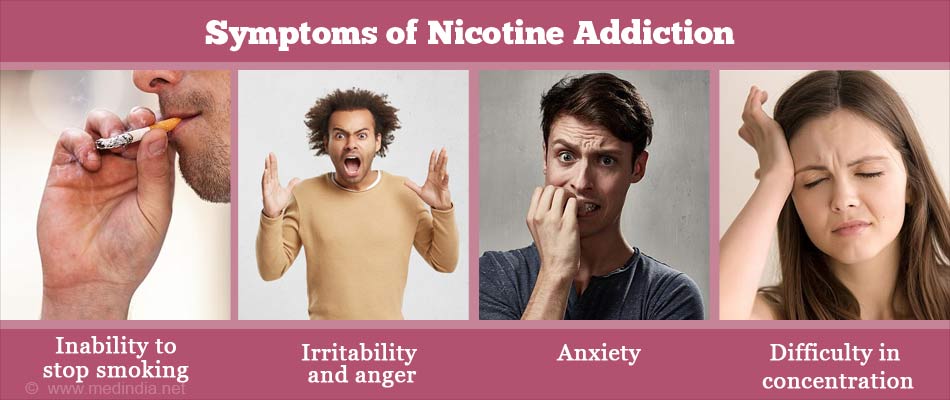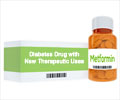- Help! I Want to Quit Smoking! - (http://www.heart.org/heartorg/healthyliving/quitsmoking/quittingsmoking/medicines-that-can-help-you-quit-smoking_ucm_307921_article.jsp#.wx_gtyozbiu)
- Nicotine dependence - (https://www.mayoclinic.org/diseases-conditions/nicotine-dependence/diagnosis-treatment/drc-20351590)
- Drugs used to treat nicotine addiction - (https://www.ncbi.nlm.nih.gov/pubmed/23421099)
- Nicotine Dependence Treatments - (https://www.ucsfhealth.org/conditions/nicotine_dependence/treatment.html)
- Nicotine Addiction - (https://www.addictionrecoveryguide.org/medication/nicotine)
- Update on medicines for smoking cessation - (https://www.nps.org.au/australian-prescriber/articles/update-on-medicines-for-smoking-cessation)
- Tobacco, Nicotine, and E-Cigarettes - (https://www.drugabuse.gov/publications/tobacco-nicotine-e-cigarettes/what-are-treatments-tobacco-dependence)
- Prescription Drugs to Help You Quit Tobacco - (https://www.cancer.org/healthy/stay-away-from-tobacco/guide-quitting-smoking/prescription-drugs-to-help-you-quit-smoking.html)
What is Nicotine Addiction?
Nicotine addiction, also known as tobacco dependence is an addiction to tobacco products which contain the drug nicotine. It is a result of long-term exposure to nicotine, which causes withdrawal symptoms when not smoking, and difficulty to quit smoking.
Once addicted to nicotine, smokers continue to use tobacco regularly in spite of being aware of its negative health consequences.
Consumption of nicotine creates a sense of euphoria (a “high” or a “rush”), as is associated with other types of abused drugs.
Nicotine increases the levels of a brain neurotransmitter called dopamine, which in turn, increases the need for repeatedly taking nicotine. This repeated exposure to nicotine alters the brain’s sensitivity to dopamine and changes the brain’s responses to learning, stress, and self-control.
The pharmacokinetic properties of nicotine also contribute to nicotine dependence. Nicotine is rapidly absorbed into the blood and delivered immediately to the brain, with peak levels reaching within 10 seconds. At the same time, nicotine’s effects diminish quickly, thus causing the smoker to smoke frequently to maintain the feeling of pleasure and to avoid withdrawal symptoms of irritability, craving, depression, and anxiety.

What are the Symptoms of Nicotine Addiction and the Subsequent Withdrawal Symptoms?
Nicotine abuse leads to pleasurable effects and temporarily increases the ability to sustain attention and increased memory.
The signs which indicate that a person may be addicted or dependent on nicotine are:
- Inability to stop smoking
- Continuous urge to smoke throughout the day
- Experiencing withdrawal symptoms when trying to quit smoking
- Avoiding social or recreational activities
Long-term use of nicotine is associated with a decline in memory and risk of Alzheimer’s disease.
Once addicted to nicotine, a person starts having withdrawal symptoms around 30 minutes from the last use of tobacco; these include:
- irritability and anger
- depression
- anxiety
- sleep disturbances
- increased appetite
- cravings
- difficulty in concentration
- fatigue

What are the Drugs used to Treat Nicotine Addiction?
Nicotine dependence or addiction can be cured by a combination of counseling or behavioral therapies, and FDA approved anti-smoking medications.
The FDA approved medications have been reported to have good quitting rates. These medications help overcome nicotine withdrawal symptoms and help the smoker manage without cigarettes.
These medications are of two types:
- Nicotine replacement therapy
- Non- nicotine smoking cessation drugs / medications
Nicotine replacement therapy (NRT)
Nicotine replacement therapy involves consuming nicotine without tobacco, thus avoiding the harmful effects of chemicals in tobacco smoke.
The NRTs stimulate brain receptors targeted by nicotine and help reduce nicotine withdrawal symptoms and cravings. These medicines cannot be consumed with other tobacco products or when smoking. The combined effect of nicotine and NRTs can be very dangerous. Hence, NRTs must be used only after quitting smoking.
The NRT formulations available over-the-counter include:
Nicotine gum (e.g., Nicorette) – This product contains nicotine in the form of Nicotine Polacrilex. The gum is chewed a few times in the mouth and is then allowed to remain in the cheek for some time. The nicotine is gradually absorbed into the blood stream. One of the common side effects of this product is mouth irritation and other nicotine related effects like heartburn, hiccups and, nausea.
Nicotine transdermal patches (e.g., NicoDerm CQ)
The patches contain nicotine which gets delivered through the skin into the bloodstream.
Common side effects include skin irritation and insomnia.
The patches may be used in combination with the gum formulations; this would make it more effective in reducing withdrawal symptoms and cravings than using a single therapy alone.
Nicotine lozenges (Committ, Nicorette mini lozenge)
The lozenge dissolves in the mouth and nicotine is delivered through the lining of the mouth. Common side effects include mouth irritation as well as heartburn and nausea.
The NRT formulations available by prescription include:
Nicotine nasal spray
The product is sprayed into the nose, and the nicotine is absorbed from the nasal lining. In this form, the nicotine reaches the brain faster than the gum, inhaler or lozenge. The spray may initially cause coughing, runny nose or watery eyes for a few weeks.
Nicotine oral inhaler (e.g., Nicotrol inhalation)
The delivery device is like a cigarette holder; the smoker puffs on it like a cigarette and nicotine vapor is delivered into the mouth. Common side effects include mouth and throat irritation and occasional coughing.
E-Cigarettes
An e-cigarette is an electronic device which looks like a cigarette. It delivers nicotine in the vapor form which is then inhaled. It does not have any harmful effects of smoking, as the vapor contains no tar or carbon monoxide. However, smoking quit rates are not as high as for NRT products.

Non- nicotine smoking cessation drugs / medications:
These include medications which do not deliver nicotine and are available only on prescription.
Bupropion
This drug was initially approved as an antidepressant and is now widely used for smoking cessation. It stimulates the release of norepinephrine and dopamine by inhibiting the reuptake of these brain chemicals. It helps to reduce cravings and symptoms of tobacco or nicotine withdrawal. It is available as Bupropion Hydrochloride extended release oral medication, as a prescription drug.
Side effects of this drug include agitation, insomnia, constipation, dry mouth and headache.
Varenicline
Varenicline is a prescription drug available in tablet form. It stimulates dopamine and blocks the nicotine receptors, thus helping to reduce nicotine cravings. Some studies report it is more effective than NRTs and Bupropion. Common side effects include insomnia, nausea, and headache. In rare cases, this drug can lead to depressed mood and suicidal thoughts.
Medication combinations
There are reports which suggest that the combination of NRTs and other medications like Varenicline are more effective than using any of them alone.
Other antidepressants
Some antidepressants, other than Bupropion, are also prescribed as second-line medications for smoking cessation, for example, nortriptyline. It increases the levels of the brain neurotransmitter norepinephrine. Common side effects include drowsiness, fast heart rate, dry mouth, and constipation.
Other drugs:
- Clonidine – earlier used to treat high blood pressure, now also used to help quit smoking Naltrexone - a drug used to cure disorders associated with alcohol and opioid abuse. It is prescribed in combination with Varenicline to help quit smoking, especially for smokers who are also heavy drinkers.
What are the Risk Factors and Complications of Nicotine Addiction?
Risk factors for smoking include:
- Having a family member who smokes
- Age – Most people start smoking in their teen years and continue as heavy smokers in their adult years
- Depression or other mental illness
- Consuming any addictive substance – e.g. alcohol or abusive drugs
- Influence of smoking from peers, movies, or the internet
Complications:
Smoking harms almost all parts of the human body. Apart from causing nicotine dependence, tobacco’s harmful chemicals can also cause cardiovascular disease, diabetes, cancer or respiratory problems. Smoking can also lead to complications in pregnant women and newborns.
What are the Tips to Stop Smoking / Benefits of Quitting Smoking?
Prevention measures must be taken at the community level to educate smokers about the health risks of smoking.
Tips to avoid smoking include:
- Identify the smoking triggers and try avoiding them
- Stay motivated - take a firm decision to quit and make a list of reasons to ensure that the plan to stop smoking is implemented
- Seek external support - family, friends, and colleagues at work can support and encourage in stopping smoking
- Avoid alcohol
- Attend a stress-management workshop
- Reward oneself – the smoker can reward self which would in turn help to avoid smoking
The nicotine withdrawal symptoms can be managed by following these points:
- Exercise regularly – physical activity helps to reduce withdrawal symptoms
- Control the cravings – the cravings usually last for about 5 to 10 minutes; during this time the smoker must divert the mind to do activities like walking or eating healthy snacks
- Talk to a support person – talking to a support person encourages the smoker to overcome the cravings
- Avoid high-risk situations – the triggers must be identified and avoided
- Eat regular and healthy meals – one must consume lots of fruits and vegetables and drink more water








